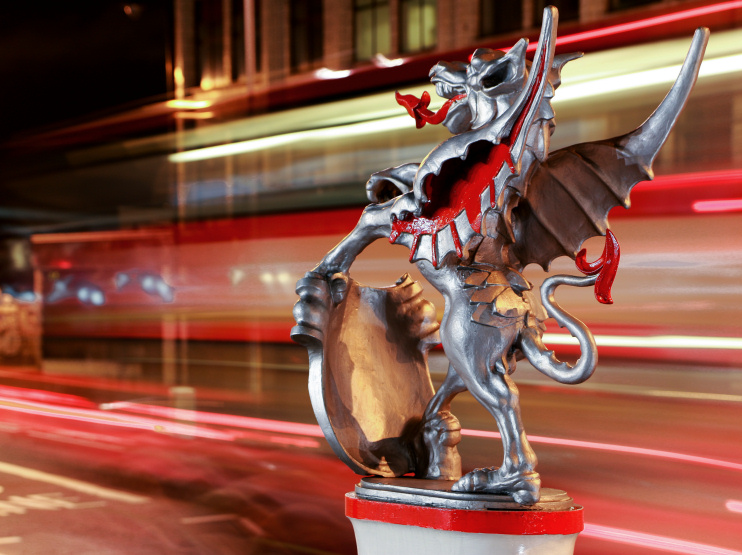City of London dragons
The dragons of the City of London
Since the early 17th century a pair of dragons has supported the crest of the City of London in its coat of arms; and in the latter part of the 19th century ornamental boundary markers were erected at points of entry into the City, each surmounted by a dragon clutching the heraldic shield.
The dragons’ introduction seems to have derived from the legend of St George – whose cross has been a City emblem since at least the early 14th century – and may have been specifically linked to a popular misconception that a fan-like object bearing the cross on an earlier crest was a dragon’s wing.
The City dragon is often incorrectly called a griffin, or gryphon, even in some official literature. It is not clear how the confusion arose but the misnomer has become so entrenched that some authorities consider it to have earned a degree of legitimacy. This especially applies to the statue at Temple Bar, where Westminster’s Strand becomes the City’s Fleet Street. The term ‘east of the Griffin’ was once commonly employed to mean ‘east of Temple Bar’, i.e. in the City of London:
“If something unexpected did not happen, it meant another visit to a little office he knew too well in the City, the master of which, more than civil if you met him on a racecourse, … was quite a different person and much less easy to deal with east of the Griffin.”
Alfred Watson: Racecourse and Covert Side (1883)


